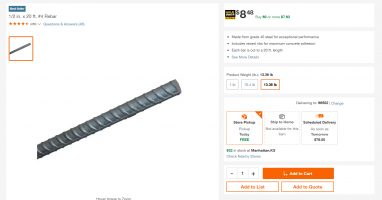ICC - ES Helix Steel
The ICC - ES report above recommends that building departments approve the use of this concrete reinforcing product https://www.helixsteel.com/products-services/ under certain reasonable limitation for IRC houses that are not in major seismic areas.
Given:
NEC 250.50. - All grounding electrodes as described in 250.52(A)(1) through (A)(7) that are present at each building or structure served shall be bonded together to form the grounding electrode system. Where none of these grounding electrodes exist, one or more of the grounding electrodes specified in 250.52(A)(4) through (A)(8) shall be installed and used.
Exception: Concrete-encased electrodes of existing buildings or structures shall not be required to be part of the grounding electrode system where the steel reinforcing bars or rods are not accessible for use without disturbing the concrete.
The argument has been that if there is rebar in a foundation, you are required to bond to it because of 250.50. Are they required to provide a concrete encased electrode at a house that uses only Helix Steel reinforcement in the foundation?
The ICC - ES report above recommends that building departments approve the use of this concrete reinforcing product https://www.helixsteel.com/products-services/ under certain reasonable limitation for IRC houses that are not in major seismic areas.
Given:
NEC 250.50. - All grounding electrodes as described in 250.52(A)(1) through (A)(7) that are present at each building or structure served shall be bonded together to form the grounding electrode system. Where none of these grounding electrodes exist, one or more of the grounding electrodes specified in 250.52(A)(4) through (A)(8) shall be installed and used.
Exception: Concrete-encased electrodes of existing buildings or structures shall not be required to be part of the grounding electrode system where the steel reinforcing bars or rods are not accessible for use without disturbing the concrete.
The argument has been that if there is rebar in a foundation, you are required to bond to it because of 250.50. Are they required to provide a concrete encased electrode at a house that uses only Helix Steel reinforcement in the foundation?


